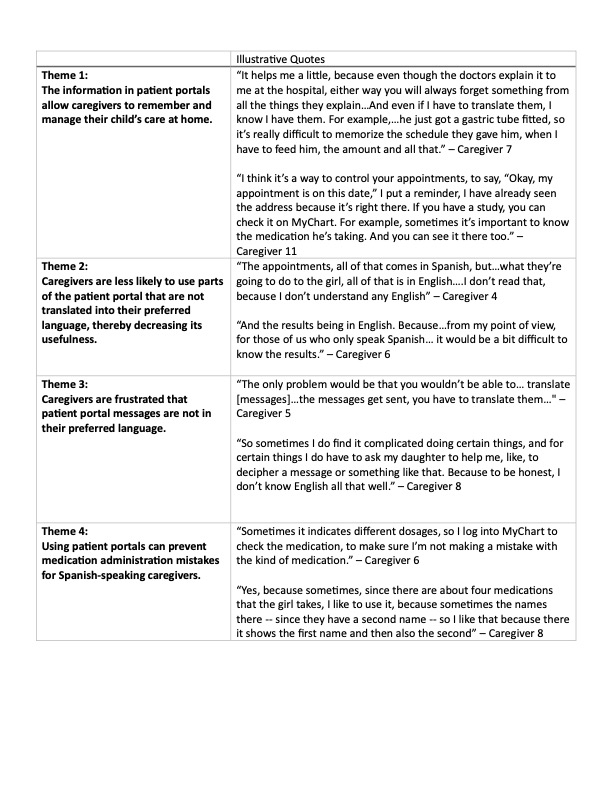Health Equity/Social Determinants of Health
Session: Health Equity/Social Determinants of Health 1
433 - Perspectives of Spanish-speaking caregivers on patient portal use for children with chronic conditions.
Friday, May 3, 2024
5:15 PM - 7:15 PM ET
Poster Number: 433
Publication Number: 433.224
Publication Number: 433.224

Gabriel Tse, MD
Pediatric Hospital Medicine Fellow
Stanford University School of Medicine
Palo Alto, California, United States
Presenting Author(s)
Background: Patient portals are a digital health technology that help caregivers engage with their child’s healthcare. Unfortunately, significant disparities in portal use exist, with caregivers who speak languages other than English (LOE) having lower usage rates compared with their English-speaking counterparts. No pediatric study has sought to understand why and how LOE caregivers use patient portals. Understanding their perspectives can help guide strategies that improve usability and promote equitable use for LOE patients and caregivers.
Objective: To examine Spanish-speaking caregivers’ perceptions on the usefulness of and facilitators, barriers, and strategies to improve the use of patient portals.
Design/Methods: In this qualitative study, we conducted semi-structured interviews with Spanish-speaking caregivers from May to October 2023. Eligibility criteria were caregivers of children < 12 years old with at least one chronic condition and caregivers enrolled with patient portal accounts. Interview questions were developed from our study aims and piloted with the hospital’s Latinx Family Advisory Council. Caregiver interviews were conducted by a bilingual research assistant and transcribed and translated verbatim. Two investigators independently coded the transcripts inductively and met to reconcile codes. Preliminary themes and coding conflicts were discussed and reconciled with three other research team members.
Results: We interviewed 20 caregivers. Four themes were identified: 1) The information in patient portals allow caregivers to remember and manage their child’s care at home; 2) Caregivers are less likely to use parts of the patient portal that are not translated into their preferred language, thereby decreasing its usefulness; 3) Caregivers are frustrated that patient portal messages are not in their preferred language; 4) Using patient portals can prevent medication administration mistakes for Spanish-speaking caregivers (Table 1).
Conclusion(s): While Spanish-speaking caregivers report high perceived usefulness of patient portals, many still face translation barriers that may widen digital health disparities. Future research should focus on evaluating user-centered solutions that increase translation ability within patient portals.

